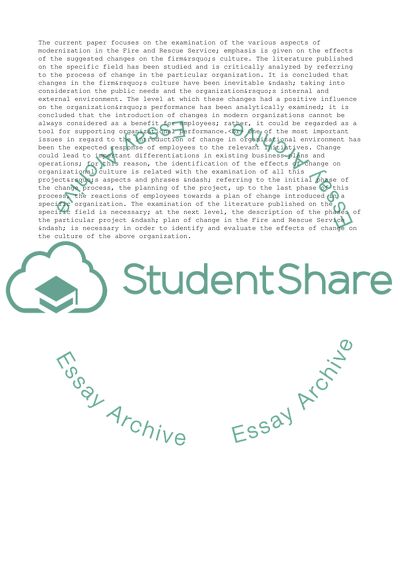Cite this document
(Effect of the Modernisation of the Fire and Rescue Service Research Paper, n.d.)
Effect of the Modernisation of the Fire and Rescue Service Research Paper. Retrieved from https://studentshare.org/management/1737609-what-affect-has-the-modernisation-of-the-fire-and-rescue-service-had-on-its-culture
Effect of the Modernisation of the Fire and Rescue Service Research Paper. Retrieved from https://studentshare.org/management/1737609-what-affect-has-the-modernisation-of-the-fire-and-rescue-service-had-on-its-culture
(Effect of the Modernisation of the Fire and Rescue Service Research Paper)
Effect of the Modernisation of the Fire and Rescue Service Research Paper. https://studentshare.org/management/1737609-what-affect-has-the-modernisation-of-the-fire-and-rescue-service-had-on-its-culture.
Effect of the Modernisation of the Fire and Rescue Service Research Paper. https://studentshare.org/management/1737609-what-affect-has-the-modernisation-of-the-fire-and-rescue-service-had-on-its-culture.
“Effect of the Modernisation of the Fire and Rescue Service Research Paper”, n.d. https://studentshare.org/management/1737609-what-affect-has-the-modernisation-of-the-fire-and-rescue-service-had-on-its-culture.


